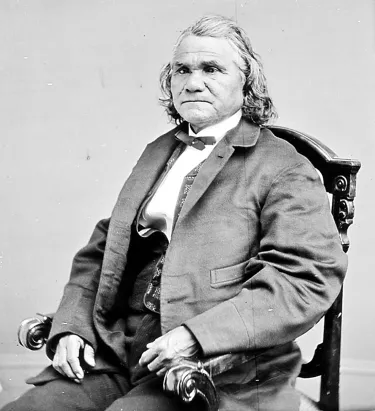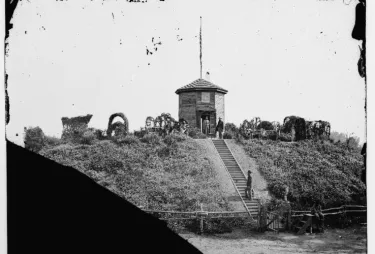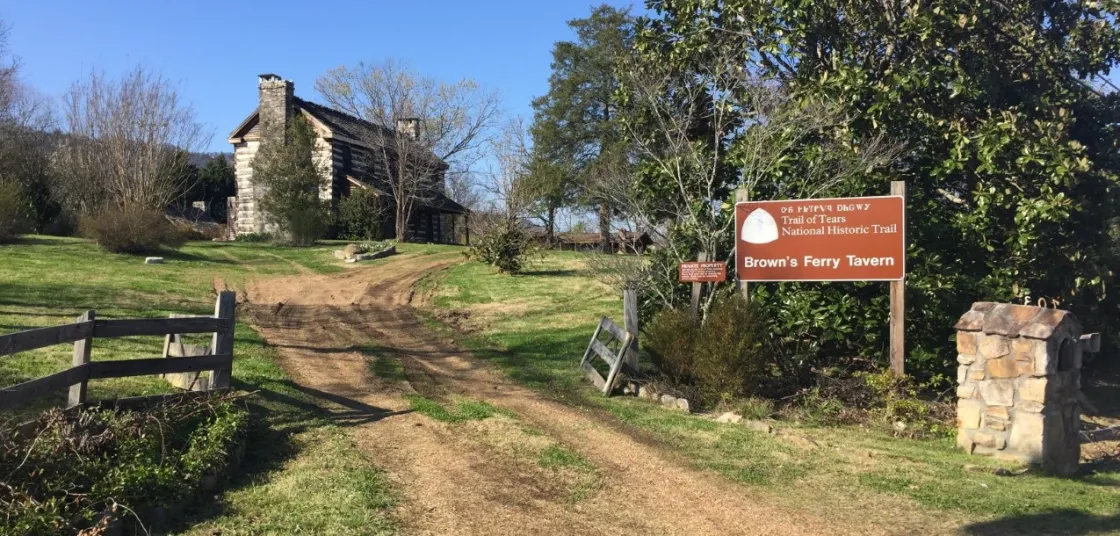
The stories of Native Americans during the Civil War are a vital component of the history of our nation’s greatest conflict. The American Battlefield Trust has been fortunate, through our battlefield preservation efforts, to have had the opportunity to help facilitate the telling of these stories by preserving land with important Native American associations. The sites very widely in terms of both geography and time period. Some of them have borned witness to active Native American participation in the Civil War and other early American conflicts. Others were saved almost by accident: centers of ancient cultures that lived long before Europeans arrived in the New World that just happened lie where battles were fought centuries after their decline. But all of them have an important story to tell about how Native Americans shaped the history of the land we now all share.
In addition to saving hallowed ground where Native Americans lived, struggled and fought, the Trust has worked with tribes on numerous occasions to solicit their invaluable input as part of the Section 106 review process. The Trust’s interactions with tribes regarding historic preservation has been uniformly positive, and we look forward to further successful partnerships in the future. The following is a brief overview of the Trust’s work on land acquisition projects with a Native American connection.
Colorado
Sand Creek – In 1864, Sand Creek, Colorado became the site of one of the worst massacres of Native Americans in U.S. history. Today, the land remains preserved as a solemn memorial to those lives taken in the violence. In November of 2015, for the 151st anniversary of the Sand Creek Massacre, Governor John Hickenlooper announced the transfer of 640 acres of state-owned land to the Sand Creek Massacre National Historic Site. The preservation of this land was the result of years of collaboration between the State of Colorado (Colorado State Board of Land Commissioners), the History Colorado State Historical Fund, the History Colorado Office of Archaeology and Historic Preservation, the American Battlefield Trust, and the National Park Service (NPS). The Trust applied for and received a $200,000 grant from the History Colorado State Historical Fund to help fund the purchase of the tract and facilitate its transfer to NPS. The Cheyenne and Arapaho Tribes provided a joint letter of support for the Trust’s grant application, noting that “events crucial to an understanding of the massacre” occurred on the property.
Georgia
Chickamauga – In December of 2015, the Civil War Trust helped to preserve 30.9 acres associated with the opening action of the Battle of Chickamauga at Reed’s Bridge. After the owner of the tract alerted the Trust to the possibility that a Native American mound was located on the property, the Trust worked with the Georgia Department of Natural Resource’s Historic Preservation Division (HPD) to investigate this claim and the HPD determined that the archeological site in question was located outside of the target tract. Today, the National Park Service states that the site of Moccasin Bend contains evidence of "12,000 years of continuous human habitation." When Spanish Conquistador Hernando de Soto explored the area in 1540, he reported on finding multiple large, wooden towns, each capable of containing thousands of people. Very few people believed these reports for centuries, and yet part of the site contains renments of just such a village that he described. Further, as a requirement of the American Battlefield Protection Program (ABPP) land acquisition grant awarded to help fund the tract’s purchase, the Trust placed a perpetual conservation easement on the property held by the Georgia Piedmont Land Trust. During the easement recordation process, input from the Thlopthlocco Tribal Town of Oklahoma was incorporated into the conservation easement.
Minnesota
Wood Lake – Working with the Wood Lake Battlefield Preservation Association, the Minnesota Historical Society, and ABPP, the Trust has preserved via conservation easement 240 acres associated with the Battle of Wood Lake in Minnesota (60 acres in 2009; 180 acres in 2011). Fought between U.S. troops and the Santee Sioux, the Battle of Wood Lake was the last major engagement in the Dakota War of 1862. The war began due to the failure of the U.S. government to abide by the terms made with the Dakota people ten years earlier, which guaranteed the Dakota supplies and ammunition in exchange for living in their designated reservation. Frustrated, the Dakota decided to take what they saw as rightfully theirs by force. The result was a series of frequent raids on settlers that lasted for months and until the U.S. Army pulled off enough troops from fighting the Confederacy to intervene. In 2010, Wood Lake was added to the National Register of Historic Places.
Mississippi
Corinth – The site is the home to the Shiloh Indian Mounds, built around 800 years ago by a complex agricultural society. The mounds themselves probably served as either platforms for important buildings or burial places for chieftans or important elders. But what truly surprised archaeologists was that many of the artifacts excavated were from areas hundreds of miles from the area, including Cahokia in Illinois, easily the largest pre-Columbian urban center north of Mexico, larger even than most early colonial cities. Far from being a wilderness, these findings suggest extensive trading and political contacts throughout the Midwestern United States. Through member donations and grants from ABPP, the American Battlefield Trust has preserved over 700 acres at Corinth. The Trust’s most recent acquisition at the battlefieldy was completed in partnership with the the Mississippi Department of Archives and History, and with tribal input from the Jena Band of the Choctaw Nation.
Oklahoma

Cabin Creek – In 2011, the Trust saved 88 acres associated with the two Civil War battles fought at Cabin Creek. Both engagements at Cabin Creek were fought on Cherokee Nation land, within region then designated as “Indian Territory.” In both contests, Confederate forces were led by Stand Watie, a Confederate general and a leader of the Cherokee Nation. Watie later became the only Native American to reach the rank of general in either the Union or Confederate armies. The first battle at Cabin Creek in July 1863 was also one of the first battles in which African-Americans fought as a unit west of the Mississippi River.
Honey Springs – Fought on July 17, 1863, the Battle of Honey Springs was an important victory for Union forces in their efforts to gain control of the region known as “Indian Territory.” With significant numbers of African American and Native American soldiers taking part in the fight, the Battle of Honey Springs marked one of the few times during the war that white soldiers were in the minority. The Trust has worked to preserve 84 acres at Honey Springs Battlefield, including the recent acquisition of 5 acres on the northern end of the battlefield. During the Section 106 process for that 5-acre acquisition, the Trust worked closely with the Tribal Historic Preservation Officer for the Muscogee (Creek) Nation.
Tennessee

Chattanooga – Combined with Chickamauga Battlefield in one military park, the Chattanooga battlefield is also connected to Native American history much more recent than the Moccasin Bend site. It was also the site of the camp at Ross Landing, where many members of the Cherokee nation were relocated in 1839 during the Trail of Tears, the infamously hazardous journey to modern Oklahoma. In 2015, in partnership with ABPP, the Trust acquired 11.6 acres at Brown’s Ferry associated with the battles of Wauhatchie and Chattanooga. This preservation project was undertaken in cooperation with the Tennessee Historical Commission, the United Keetoowah Band of Cherokee and Thlopthlocco Tribal Town of Oklahoma. In 2020, the Trust saved the 9-acre Brown’s Tavern site, which contains the circa 1803 Tavern owned by John Brown, who is believed to have served as the captain of a Cherokee regiment in the War of 1812 and have participated in the Trail of Tears relocation to Oklahoma in 1838. The property is a stop on the Trail of Tears National Historic Trail. The Trust anticipates transferring the land and historic structure, as well as the two other properties previously purchased at Brown’s Ferry, to National Park Partners, the acclaimed friends group dedicated to safeguarding and promoting the six units of Chickamauga and Chattanooga National Military Park.

Help the Trust save 161 acres across consequential Western Theater battles — Fort Heiman and Fort Henry, Brown’s Ferry/Chattanooga, Spring Hill, and...
Related Battles
76
163
16,170
18,454
41
0
2,359
4,838
23
65
77
181
5,824
8,000





